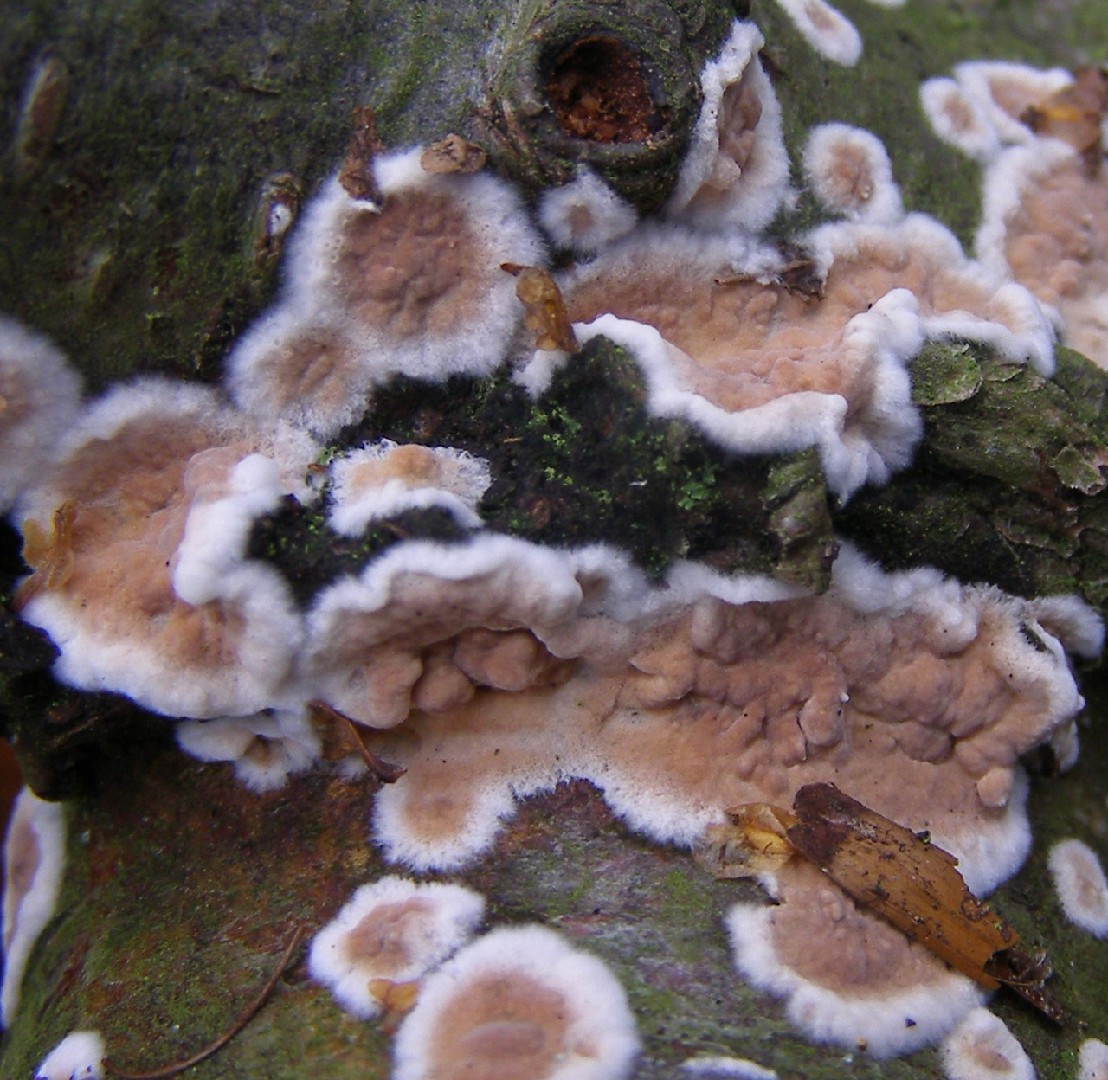Blackwattle stump fungus
Scientific name: Cylindrobasidium
Blackwattle stump fungus
Scientific name: Cylindrobasidium
 Photo By TristramBrelstaff , used under CC-BY-3.0 /Cropped and compressed from original
Photo By TristramBrelstaff , used under CC-BY-3.0 /Cropped and compressed from original Description
Blackwattle stump fungus typically grows on decaying wood, turning it into a rich source of nutrients for the forest ecosystem. It has a distinctive smooth, waxy surface and often appears as spreading patches. While usually inconspicuous, some species within the group can display vibrant colors. Blackwattle stump fungus is part of a larger community of decomposers that helps recycle organic material back into the soil, playing a crucial role in maintaining the health of forest habitats.
Species of Blackwattle stump fungus
Scientific Classification
Phylum
Club fungi Class
Mushroom-forming fungi Order
Gilled fungi Family
Physalacriaceae Genus
Blackwattle stump fungus